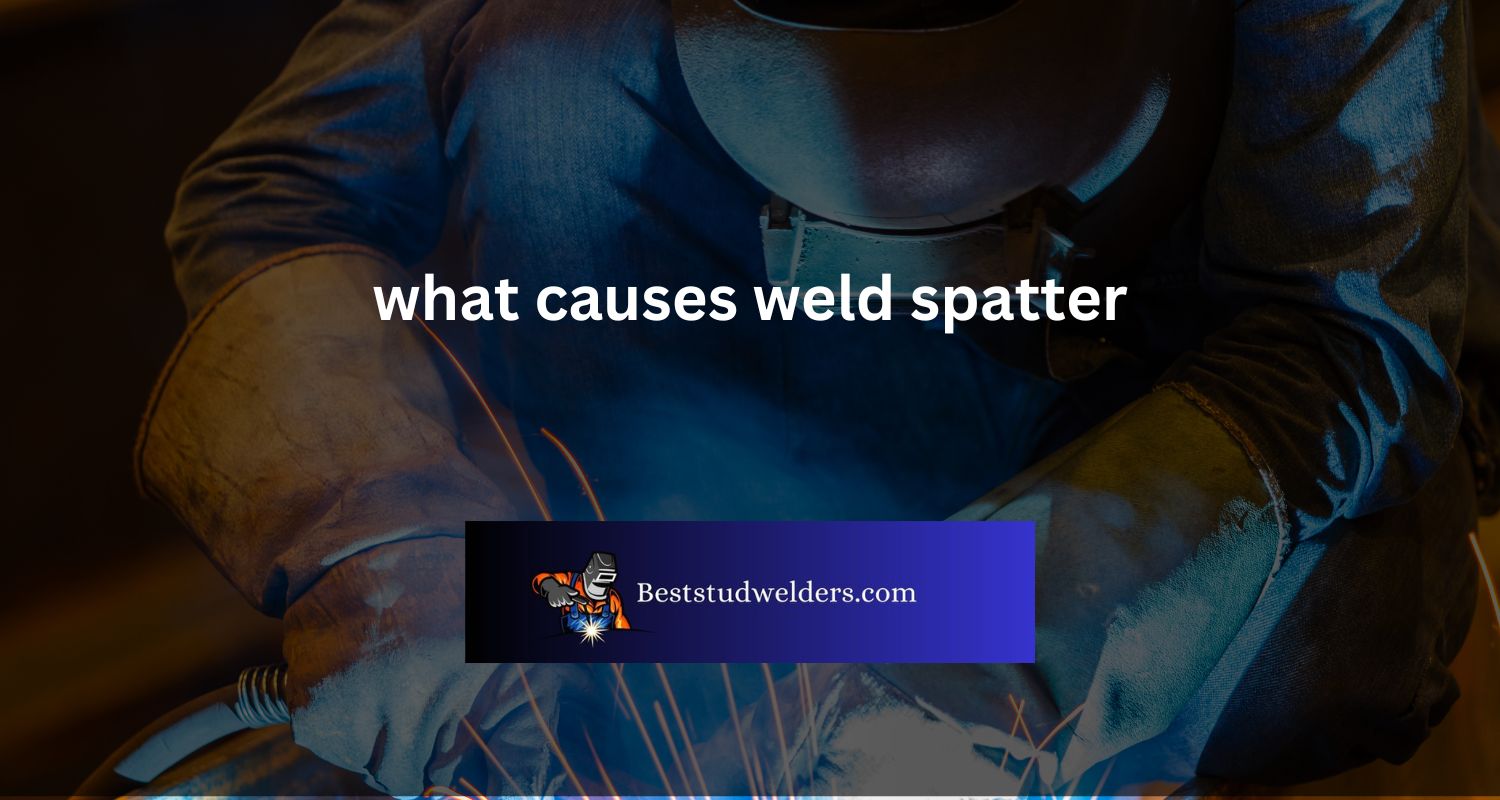Weld spatter – an unwelcome side effect of welding – can make a mess of your workpiece and give you a rough finish. So, what causes it? When welding, metal droplets are sprayed from the electrode to the workpiece, creating spatter. The size and amount of these droplets depend on factors like welding parameters, type of electrode, surface tension of molten metal, and more.
Tips to Reduce Spatter:
- To reduce weld splatter, use proper welding techniques such as short-circuit transfer mode with low amperage settings.
- Choosing the right electrode is also key. Lower spatter electrodes reduce splashing by creating less molten material and keeping it in contact with the weld puddle.
Pro Tip: Clean the weld surface and gun nozzle regularly to prevent cross-contamination, which may increase spatter output during subsequent welds.
Let’s make welding spatter-free – no unwanted confetti at this party!
Understanding Weld Spatter
To gain a deeper understanding of weld spatter with a focus on reduction, delve into the section “Understanding Weld Spatter” with “Definition of Weld Spatter” and “Causes of Weld Spatter” as sub-sections. By exploring the causes of this welding defect, you can take informed measures to prevent and manage it.
Definition of Weld Spatter
Weld spatter is the welding material that flies around during the welding process – from sparks to metal droplets. This can cause damage and disrupt weld quality. To reduce this risk, welders should take precautions like properly cleaning and prepping surfaces, reducing voltage, using anti-spatter spray or coatings, and monitoring spatter during welding. Excessive spatter could signify issues with technique or equipment. By following precautionary steps, welders can avoid the mess and get a high-quality finished product.
Let’s be honest, weld spatter is just the welding equivalent of a messy breakup – nobody wants it, but it happens anyway.
Causes of Weld Spatter
Weld spatter – no welder’s friend – can lead to rework and lower productivity. Possible causes include:
- Excessive Current: Too much current not tailored to the metal’s thickness can result in extra spatter.
- Dirty Metal Surface: Impurities like rust or oil can cause poor welding and more spatter.
- Inadequate Welding Gas Protection: Low coverage of the welding gas can cause spatter and contamination.
- Poor Quality Consumables: Unstable wires, electrodes, etc. can lead to bad spatter formation.
To avoid spattering, adjust welding parameters like heat input, travel speed, and amperage. Also, use the right wire feed rate and shielding gas.
An extra place spatter often occurs is overwelded corners. The layering causes splash as it cools down.
High purity CO2 gas used during MIG welding on mild steel has been reported to reduce electrical noise/NTR up to -47dB.
But don’t let weld spatter ruin your day – unless that’s your thing.
Consequences of Weld Spatter
To prevent the adverse effects of weld spatter, you need to be aware of its consequences. In this section, “Consequences of Weld Spatter,” we will discuss the various effects it can have on you and your materials. You will learn about the health issues that weld spatter can cause and the damages it can inflict on materials.
Health Issues
Welding is known for producing toxic fumes, gases and particles – all of which can be dangerous to human health. Prolonged exposure to these by-products can lead to respiratory irritation, asthma, pulmonary fibrosis, pneumoconiosis, lung cancer and even worse.
Organizations must take measures to regulate the welding by-products. Breathing equipment and ventilation systems are a must in these work environments.
Sadly, one welder from New Zealand, Wayne, was diagnosed with silicosis from inhaling microscopic particles floating around his workspace. The lack of precautionary measures left him physically unable to do the work he loved – helping people in his community through metal fabrication.
The weld spatter left a scar – both mentally and physically.
Damage to Materials
Molten metal splatter can cause havoc on materials. Damage, contamination, and alterations can occur on surfaces and penetrate deeper into the structure. Hardening, embrittlement, weakening, deformations, and corrosion can happen. Severe structural failure and machine failure can be the result.
Prevention is key. Put shields and guards around welds. Choose the right materials and coatings.
Avoid a spatter disaster – take precautions!
.jpg)
Tips to Reduce Weld Spatter
To reduce weld spatter when welding, use anti-spatter sprays, clean your materials before welding, use the correct welding technique, and invest in high-quality welding equipment. These tips will help reduce spatter, which can cause damage to your workpiece and make your welding project more difficult.
Use Anti-Spatter Sprays
To keep weld spatter away, advanced technology comes to the rescue. A popular technique is the Anti-Spatter Spray, used on the metal surface before welding. Here’s how to do it:
- Clear the area to be welded of oil, grease, or debris.
- Shake up the spray can.
- Spray an even layer on the metal.
- Wait 30 seconds or what’s in the instructions.
- Start welding.
Anti-Spatter Sprays can save time and money – plus reduce clean-up. However, too much could lead to fumes. Make sure to provide good ventilation, and check if the spray is compatible with the substrate. And don’t forget: clean your materials first!
Clean Materials Before Welding
Maximizing welding productivity needs cleaning materials first. Grime, rust and dirt can cause weld spatter that affects the quality of the product. Here’s a 4-step guide to clean materials before welding:
- Remove surface contamination with a wire brush or grinder.
- Clean the area with solvents for metal surfaces. Remove any residue that could lead to increased spatter.
- If needed, use a sandblaster to fully remove rust and build-up.
- After cleaning, use pre-weld treatment solutions on the material’s surface for proper adhesion.
Failure to clean materials before welding can result in poor-quality welds or even cracking. Cleanliness is essential for high-quality welds and prolonging the life of welding equipment. ‘Miller Electric‘ says over 80% of welding issues come from improper cleaning. Master the right technique and weld like a boss – no spatter-fest!
Use the Correct Welding Technique
Minimizing weld spatter is a must-do for better results. Here’s a 5-step guide to welding technique:
- Adjust wire feed speed and voltage to create a stable arc.
- Keep welding gun angle at 15-20 degrees.
- Maintain a stand-off distance from the workpiece.
- Direct the weld pool towards the seam or joint.
- Move quickly to reduce heat and spatter.
It’s essential to keep your equipment in top shape. Clean the nozzle, inspect the wire for any contamination before using. These tips will save time, materials and equipment costs. Don’t forget proper technique. Invest in quality welding gear, because spatter won’t stand a chance!
Use High-quality Welding Equipment
Investing in superior welding equipment is key to reducing weld spatter. Machines that meet industry standards and specs can increase efficiency and create high-quality welds with minimal porosity. Quality machines provide greater control over the arc and ensure consistent deposition, which minimizes spatter buildup.
State-of-the-art machines with advanced software and smart technologies also reduce the chance of spattering. These devices deliver stable and optimal welding conditions, reducing spatter buildup. Automated settings also minimize operator errors during setup.
Replacing worn-out consumables such as nozzles, tips, and liners can help reduce spatter production. Some manufacturers design consumables extensions with specialized coatings to reduce friction and minimize feed blockage or resistance caused by greases or oils.
I experienced excessive spattering when joining my client’s locomotive frameworks using low-quality equipment. After trying to manually adjust parameters with no success for a while, I borrowed a high-end machine from a friend who was working abroad. The performance was great: almost no splatters! My clients were delighted with the end product thanks to investing in premium equipment.
So why endure splatters when you can make them scatter? Follow these tips and say goodbye to weld spatter.
Conclusion
In conclusion, recognizing the root causes of weld spatter and using the right preventive measures can reduce it. And, adjusting parameters such as current, voltage and wire feed speed can decrease spatter further. Proper maintenance of welding tools is also a big factor in avoiding spatter. Moreover, consider using non-stick coatings or anti-spatter sprays for extra protection.
It is worth noting that different welding techniques may need different solutions than those mentioned. Consulting experienced welders or getting professional advice can help you find the best solutions for particular situations.
Frequently Asked Questions
How can I reduce weld spatter?
One way to reduce weld spatter is to adjust the welding settings to ensure that the arc is stable and the molten metal is consistent. Another way is to use an anti-spatter spray or coating.
Can the type of welding consumables used affect weld spatter?
Yes, the type and quality of welding consumables, such as electrodes or filler wire, can affect the frequency and severity of weld spatter. It’s important to choose high-quality consumables that are suitable for the specific welding application.
What safety precautions should I take when dealing with weld spatter?
When welding, it’s important to wear appropriate safety gear, such as gloves, goggles, and a face shield, to protect yourself from spatter and other hazards
How do I clean up weld spatter?
The best way to remove weld spatter is to use a wire brush or grinding tool. It’s important to clean up spatter as soon as possible to prevent it from becoming harder to remove later.
Paul Dixon is a certified welder with a wealth of experience in welding and related technologies. He started his career as an apprenticeship in welding, where he learned the ropes and acquired extensive skills in the craft.
Over the years, Paul has continued to sharpen his expertise, earning him top-rated welding certification. He remains one of the most outstanding welders in the industry.







